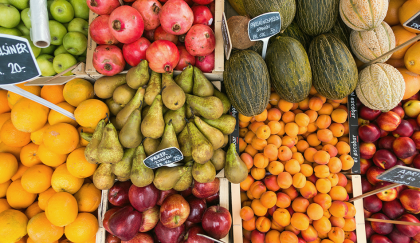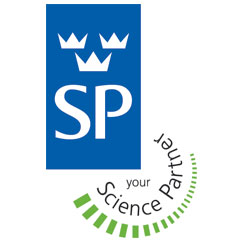How to use SimaPro for large LCA modeling projects



SP Technical Research Institute of Sweden
For a large project looking for improvement opportunities in the supply chains of six food products, the SP Technical Research Institute of Sweden used SimaPro to model the many relevant combinations of scenarios involved.
The Swedish project ‘Paths to a sustainable food sector’ set out to find improvement opportunities in the supply chains of six food products. Each supply chain was modeled in SimaPro and used as the basis for a large number of future scenarios, allowing comparison and evaluation of the resulting improvement opportunities.
Challenge
The objective of the ‘Paths to a sustainable food sector’ project, managed by the SP Technical Research Institute of Sweden, was to identify improvement opportunities for the supply chains of six food products: beef, pork, chicken, milk, cheese, and bread. To do this, SP modeled the supply chains in SimaPro and created a large set of scenarios. This way, improvements could be suggested that take important constraints, such as product safety and quality, into account. SimaPro was used to
model both the supply chains and the scenarios, and to evaluate the improvement opportunities.
Solution
Initially, conflicts between environmental goals had to be addressed to create a single goal, consisting of three goal visions: ecosystem, plant nutrients and climate. For each combination of goal vision and product, a scenario was put together, optimized by a multi-disciplinary group of experts and analysed with LCA SimaPro.
- The six supply chains were modeled to include primary production (crop production, animal production), industrial processing, waste and by-product management and the fact that the farms produce both animals and crops.
- Each of the six product supply chains was modeled in four scenarios: the three goal-related scenarios and the reference.
- Each scenario was done in two versions: using a product model or a region model. The product model has the functional unit of one kg of packaged product at retail and uses the allocation approach. The region model has the functional unit of the total annual production of the unprocessed product in the region and uses the system expansion approach. The region model is the most advanced, and takes into account that farms produce more crops than the animals consume: these crops then enter the market of the region. The system also takes into account by-products such as carcasses and manure which are either incinerated or anaerobically digested.
This combination of six products, four scenarios and two system models each would result in 48 different product supply chain models.
To complicate matters even more, the supply chains can interact through buying and selling of crops. For instance, the pig farm produces both pigs and crops. The pigs consume part of the crops. The rest is sold on a regional market, for instance to a chicken farm that cannot produce enough of a certain crop to cover its own consumption. As a result, different crop cultivation models needed to be included in each product chain, as the conditions for crop cultivation are different on the different types of farm.
To simplify the modelling, the project used parameters to be able to alter and reuse processes across scenarios. This was a successful approach for modelling the primary production of raw materials, although each industrial process required its own set of processes.
Data was supplied to the model from Excel through external links. Master parameters were set per scenario that could change the entire model: on/off switches for which type of electricity source, which fuel or heat source, which system model, etc. The market processes that were used are similar to the ones in ecoinvent. These processes were also controlled from Excel and provided a specific market mix of each crop in each scenario.
All in all, the project consisted of more than 1000 processes, not including the library processes. The full Excel sheet had almost 1700 rows, and almost the same number of links to SimaPro. This large system model resulted in many improvement suggestions, which will soon be tested in real life.
Benefits
SimaPro’s functionality simplified modelling and analysis of this large system in various ways:
- Models are easy to verify and trust, since SimaPro shows all expressions, formulas, parameters and external links with their current value.
- Aggregated system processes help simplify parts of the model not currently being studied, decreasing the number of processes and uncluttering the visual network.
- The network feature automatically places the approximately 200 processes in each product chain in a Sankey diagram.
- Analysis groups allow LCA practitioners to group processes together, to simplify analysis.
Most importantly, the models could be parameterized, making this project a potential foundation for future work: the process and models can be used again and again for similar studies.
Thanks to the models created in SimaPro, various improvement options could be identified to optimize the product supply chains for the Swedish food products under study. Because the model was so large, the Report Maker application could have saved time in extracting reports – something to consider for next time.